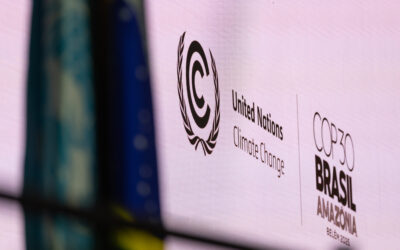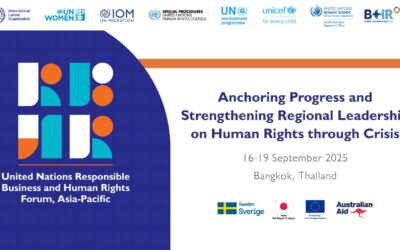
We, members of the Indigenous Peoples Advisory Group (IPAG), have engaged in the ongoing Safeguards Policy Review of the Asian Development Bank (ADB) since last year with good faith. We note the positive changes made in the revised ESF, including integration of ESS7 across other ESSs and requirement for Free, Prior and Informed Consent (FPIC) of affected Indigenous Peoples for certain circumstances in ADB-financed projects. However, we, including the following Indigenous Peoples Organizations, reiterate the following demands for revisions/additions in the revised ESF, and particularly the revised ESS7, in line with the commentary we submitted on 6 May 2024 and the standards in the policies of other multilateral development banks or institutions:
1. On scope of application of ESS7 (paragraphs 5-9), we reiterate that the revised ESS7 should explicitly mention that the host country’s applicable laws should not be a limitation for recognition of Indigenous Peoples. That is because most countries in Asia still do not officially recognize Indigenous Peoples in line with international human rights standards, including the UN Declaration on the Rights of Indigenous Peoples (UNDRIP) and ILO Convention 169.
a. We thus call on for addition as follows :
The application of the ESS7 will not be limited by the absence of legal recognition or identification of Indigenous Peoples by a state. It will also not be limited by the legal status of titling of Indigenous lands, resources and territories. (see paragraph 19, Green Climate Fund (GCF) Indigenous Peoples Policy)
b. In paragraph 7 (i) of the ESS7, while self-identification is a criteria for recognition of Indigenous Peoples, it also refers to recognition of this identity by “others”. It should be revised to state that recognition of Indigenous Peoples by “others” only refers to “other Indigenous Peoples”.
c. Further, paragraph 9 of the revised ESS7 should be revised to state that “Following a determination by ADB based on para 7 and 8, …”. That is because paragraph 8 also refers to recognition of Indigenous Peoples. (see paragraphs 8-10 of World Bank’s ESS7)
2. On requiring Free, Prior and Informed Consent (FPIC), we reiterate that the revised ESF should integrate the requirement to obtain Free Prior and Informed Consent (FPIC) of the Indigenous Peoples throughout the revised ESF. ADB should require that meaningful consultation is carried out with Indigenous Peoples present in the proposed project-affected area to obtain their FPIC for the proposed ADB-financed project, including for any significant changes to the project, and the outcome of the process clearly documented – not only when project causes certain impacts. This is in line with our rights to self-determination, to our lands, territories and resources and to determine and develop priorities and strategies for exercising our right to development, among others, as guaranteed in the UNDRIP. Thereby, States are to consult and cooperate in good faith with the indigenous peoples concerned through their own representative institutions in order to obtain their free, prior and informed consent before adopting and implementing legislative or administrative measures that may affect them (Art. 19, UNDRIP).
While FPIC is an iterative process that should be obtained or maintained throughout the project life cycle, it should particularly be obtained for the project preparation or design itself and during the E&S assessment. FPIC includes the rights of Indigenous Peoples to provide consent or conditional consent, or withhold consent for a project, and also withdraw consent during the project. When ADB is unable to ascertain that such consent has been obtained from the project-affected Indigenous Peoples, ADB should not proceed further with the project or with the aspects of the project that are relevant to those Indigenous Peoples whose FPIC cannot be ascertained.
Accordingly, we call for the following revisions throughout the revised ESF:
a. In paragraph 58 of the revised Environmental and Social Policy (paragraph 54), ADB should “require a borrower/client to undertake a process of meaningful consultation with Indigenous Peoples to obtain their free, prior and informed consent (FPIC) in accordance with ESS7 and to document the outcome” when Indigenous Peoples are present in, or have a collective attachment to, a proposed project-affected area.
b. Under revised ESS1 paragraph 32, ADB should require borrower/client that the E&S assessment and the involved stakeholder engagement includes conduct of meaningful consultation with the Indigenous Peoples in the project-affected area to obtain their free, prior and informed consent (FPIC) for the project as described in ESS7.
c. Objective “e” of the revised ESS7 should be amended to state as “ensure free, prior, and informed consent (FPIC) for projects affecting them and specifically in the three circumstances described in this ESS7”
d. In paragraph 10 of the revised ESS7, it should be amended to state that the borrower will ensure that Indigenous Peoples present in, or with collective attachment to the project area are meaningfully consulted in accordance with ESS10 to obtain their FPIC in the project design and the determination of the project implementation arrangements. When ADB is unable to ascertain that such consent has been obtained from the project-affected Indigenous Peoples, ADB will not proceed further with the project or with the aspects of the project that are relevant to those Indigenous Peoples whose FPIC cannot be ascertained.
Other multilateral development banks and institutions have also been moving towards stronger standards on the rights of Indigenous Peoples, including FPIC. See, for example, below some positive provisions in those standards:
European Investment Bank (EIB) Standard 7
44. The FPIC process is required where a project:
• Affects the lands, territories or resources that Indigenous Peoples customarily own, occupy or otherwise use; or
• Relocates them from land and natural resources subject to traditional ownership or under customary use or occupation; or
• Affects or exploits their cultural resources, whether tangible or intangible, or their ways of life.
45. When the FPIC process is required, the Bank shall not be able to proceed with the financing of these activities unless the promoter is able to ascertain and document that the consent of Indigenous Peoples was obtained through an adequate FPIC process. The promoter shall carry out an FPIC process even if the right to FPIC has not been legally and formally recognised in the country or region where the project activities are located.
Inter-American Development Bank (IDB) ESPS 7
Participation and Consent
Para 13. The Borrower will undertake an engagement process with the Project-Affected Communities of Indigenous Peoples as required in ESPS 1 and ESPS 10. This engagement process includes stakeholder analysis and engagement planning, disclosure of information, consultation, and participation, in a culturally appropriate manner. In addition, this process will:
- Involve Indigenous Peoples’ representative bodies and organizations (e.g., councils of elders or village councils), as well as members of the Project-Affected Communities of Indigenous Peoples.
- Provide sufficient time for Indigenous Peoples’ decision-making processes.
- Include indigenous consultation protocols when they exist.
3. On Impact Assessment for Indigenous Peoples, we reiterate the recommendation provided earlier that such impact assessments should be separate or standalone and should aid in identifying cultural, spiritual and other relations of Indigenous Peoples to their lands, territories and resources. Such requirements also featured in prior iterations of ADB Safeguards. However, there are substantial cross-references to other ESS that complicate the process. The IED review, for instance, concluded that “[r]esults from the safeguard requirement on indigenous peoples, driven by the lack of robust SIAs, were less than satisfactory and limited.” This is a clear acknowledgement of the deficiencies in impact assessment and that these deficiencies then caused additional downstream problems (e.g., “community support cannot be established by the client without a SIA to assess the likely impacts on IPs”).
Therefore, firstly, the revised ESS7, under paragraph 11, should mandatorily require conduct of a robust and separate assessment of social, cultural and economic risks and impacts on Indigenous Peoples – or a Social Impact Assessment (SIA) – in absence of which ADB-financed projects in an area, where Indigenous Peoples are present, should not proceed. This should also resonate in the bank’s gender-related safeguards i.e. conduct of robust and separate assessment of risks and impacts for indigenous women. Secondly, it is critically important that the identified flaws in compliance and results in the case of Indigenous Peoples are fully understood and addressed if they are to be avoided in the future. Again, we consider that such reviews are best undertaken in collaboration with Indigenous Peoples and that the flaws identified above amplify the need to require and ensure Indigenous Peoples’ effective participation in the design, conduct and review of environmental and social impact assessments. These assessments also need to include specific consideration and review of the rights of Indigenous Peoples as guaranteed by international laws, and not only as they may be reflected in national laws.
4. Further, below are couple of key recommendations that we recall on to be addressed:
- Under revised ESS1 paragraph 48, in relation to ADB financing for projects in fragile and conflict-affected situations, projects should be a no-go in identified fragile and conflict affected situations unless E&S risks and impacts are fully accounted and analyzed and a risk management plan is in place. Projects should not be approved where identified that the project will further increase fragility and conflict in the proposed project area.
- In terms of compensation and benefits, under revised ESS5 paragraphs 43-45, we reiterate that the borrower/client must offer affected persons an informed choice of either compensation in kind (land-for-land, house-for-house, shop-for-shop) or monetary compensation at full replacement cost. The borrower/client should respect the choice of the affected persons. (See EIB Standard 6, Para 25)
We hope for your positive consideration to above minimum asks from Indigenous Peoples Advisory Group and its associated organizations as you deliberate and adopt the revised ESF. This will enable us to continue our good faith engagement with the ADB.
Sincerely,
Indigenous Peoples Advisory Group
Including on behalf of its following members
Asia Indigenous Peoples Network on Extractive Industries and Energy (AIPNEE)
Right Energy Partnership with Indigenous Peoples (REP)
Indigenous Peoples Rights International (IPRI)
Asia Indigenous Women’s Network (AIWN)
Asia Pacific Indigenous Women and Girls with Disabilities Network
Cambodia Indigenous Peoples Organization (CIPO)
Center for Development Programs in the Cordillera (CDPC)
Community Empowerment and Social Justice Network (CEMSOJ)
Indigenous Peoples Alliance of the Archipelago (AMAN)
National Indigenous Disabled Women Association Nepal (NIDWAN)
Lembaga Bentang Alam Hijau (LemBAH)




0 Comments
Trackbacks/Pingbacks